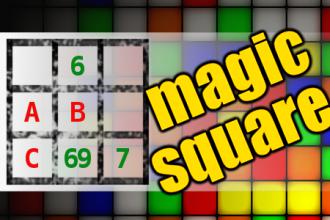MAGIC SQUARE: Calculate A*B+C
The aim is to place the some numbers from the list (6, 7, 13, 19, 20, 26, 40, 62, 63, 69, 90) into the empty squares and squares marked with A, B an C. Sum of each row and column should be equal. All the numbers of the magic square must be different. Find values for A, B, and C. Solution is A*B+C.Correct answers: 45
The first user who solved this task is Slobodan Strelac.
#brainteasers #math #magicsquare

Being rude is easy
Being rude is easy. It does not take any effort and is a sign of weakness and insecurity. Kindness shows great self-discipline and strong self-esteem. Being kind is not always easy when dealing with rude people. Kindness is a sign of a person who has done a lot of personal work and has come to a great self-understanding and wisdom. Choose to be kind over being right and you’ll be right every time because kindness is a sign of STRENGTH.

